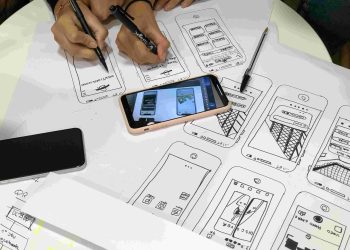Effective Techniques for Design Critique Sessions
Design critique sessions are often misunderstood.
Too many design teams approach them as mere feedback rituals, conducted out of obligation rather than strategy. This is a mistake—one that dulls innovation and stifles the creative process. But what if we challenged this outdated perception and reimagined critique sessions not just as moments of review, but as dynamic engines of growth, collaboration, and forward-thinking?
Beyond Evaluation: Shifting the Critique Paradigm
Early in my design career, I dreaded critique sessions. Feedback felt personal, almost punitive, and the sessions often seemed more about proving something to colleagues than truly improving the work. Then, a mentor of mine said something that stuck: “Critique is a mirror, not a verdict.” This changed everything. The purpose, I realized, was not judgment but insight—a reflection of not just the work on hand but the broader systems shaping it.
Philosopher Karl Popper wrote about the importance of falsifiability in science—that the best ideas are those that withstand rigorous attempts at disproof. What if we applied the same philosophy to design? Instead of seeing criticism as antagonism, we could view it as an essential tool for refining good ideas into great ones.
Principles of an Effective Design Critique
To transform critique sessions into moments of deep learning and collaboration, consider these principles:
-
Define the intent:
Before presenting work, clarify the objectives and constraints. A critique without context is like navigating without a map. -
Separate feedback from evaluation:
Encourage open-ended discussion first, reserving evaluative judgments for later. This prevents defensive mindsets and fosters creativity. -
Emphasize constructive insights:
Frame feedback in terms of possibilities, not problems. Saying “What if we explored [option]?” is far more productive than “This doesn’t work.” -
Foster emotional safety:
Critique can feel personal because design often involves emotional labor. Leaders should create environments where vulnerability is met with respect, not ridicule. -
Encourage cross-disciplinary input:
Radical ideas are born at the intersections of different knowledge domains. A business analyst’s perspective, for instance, could ignite a design breakthrough.
The Neuroscience of Feedback
Modern neuroscience provides powerful insights that can elevate the quality of critique sessions. For instance, feedback delivered with empathy activates the brain’s reward circuitry, fostering motivation and receptivity. In contrast, overly critical or vague comments activate the amygdala, the brain’s fear center, potentially shutting down creativity.
Mindfulness, a concept rooted in both psychology and philosophy, offers another layer. Training ourselves to respond rather than react during critiques ensures that emotional responses do not overshadow the goal of improvement. Active listening and self-awareness are essential muscles for any team member or facilitator.
Predicting the Future of Critique
As technology continues to evolve, critique sessions may increasingly involve AI-driven tools. For example, software like Figma is already integrating systems that can flag potential usability issues or aesthetic mismatches in real-time. But these tools should not replace human input—they should augment it. The best design critiques of the future will blend computational objectivity with human creativity, leveraging strengths from both realms.
Additionally, as remote work remains prevalent, virtual critique sessions will become more sophisticated. Advances in VR and AR could create immersive environments for collaboration, making virtual critiques feel as engaging as face-to-face interactions.
Putting It into Action
To make your next design critique session transformative, here are actionable steps:
-
Set the tone:
Begin sessions with an intentional icebreaker or grounding statement. For instance, “Our goal today is collective growth.” -
Revisit the brief:
Start by reviewing the project goals to ensure clarity and alignment. -
Use structured frameworks:
Introduce models like the “I like, I wish, I wonder” framework to guide conversations in a productive direction. -
Document feedback:
Assign someone to scribe insights visually or verbally so that knowledge isn’t lost. -
End with gratitude:
Design critique is a vulnerable act. Concluding with gratitude ensures participants leave feeling valued.
A Call for Continuous Learning
No matter how seasoned we become, there is always room to grow. Design, after all, is never static; it adapts to new challenges and evolving user needs. To excel in critique sessions—and in design more broadly—embracing a mindset of lifelong learning is imperative. As author Carol Dweck states in her research on growth mindsets, “The passion for stretching yourself…is the hallmark of the growth mindset.”
Every design critique can be a microcosm of that passion—a chance to stretch, refine, and evolve, together.











